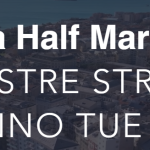As of September 2025, Malaysia’s insurance sector has fully adopted International Financial Reporting Standard 17 (IFRS 17), which became effective on January 1, 2023, marking a significant shift from its predecessor, IFRS 4. Overseen by the Malaysian Accounting Standards Board (MASB) and Bank Negara Malaysia (BNM), IFRS 17 introduces a principles-based approach to enhance transparency, consistency, and comparability in insurance contract accounting. With the market valued at approximately MYR 200 billion in gross written premiums and a Takaful segment holding 40% of the life insurance market, IFRS 17 insurance contracts in Malaysia reshapes financial reporting for both conventional and Takaful operators. Recent developments, including BNM’s 2025 policy updates, underscore the standard’s integration with local regulations, such as Risk-Based Capital (RBC) 2.0 and climate risk disclosures.
Unlike IFRS 4, which allowed diverse accounting practices, IFRS 17 mandates uniform measurement and presentation, impacting pricing, solvency, and stakeholder trust. This article examines the latest developments in IFRS 17 in Malaysia, compares its key differences with IFRS 4, and assesses its implications for insurers amid challenges such as 12.6% medical inflation and the post-pandemic recovery. It provides a comprehensive guide for stakeholders navigating this transformative standard.
Latest Developments in IFRS 17 Implementation
Since its adoption, Malaysia’s insurers have progressed through the complexities of IFRS 17. By 2025, all 35 licensed insurers, including giants like Prudential and Takaful Malaysia, will report under IFRS 17, following a phased transition: diagnostics (2019-2020), system upgrades (2021-2022), and parallel running (2022). BNM’s Financial Reporting for Insurers and Takaful Operators, updated in April 2022, integrates IFRS 17 with RBC, requiring annual audits to ensure compliance.
In March 2025, BNM introduced the Climate Risk Management and Scenario Analysis Policy, which mandates IFRS 17 disclosures for climate-related liabilities, including catastrophe risks in general insurance. This aligns with Malaysia’s sustainability goals, particularly in the areas of life and health products. The Policy Document on Transfers of Business, effective April 2025, facilitates portfolio restructuring under IFRS 17’s granular contract groupings, easing mergers.
Takaful operators have adapted IFRS 17 to Shariah principles, with MASB issuing clarifications in 2024 on Tabarru’ (donation) fund accounting and surplus distribution. Digital insurers, under BNM’s 2025 licensing framework, embed IFRS 17 in Insurtech platforms, enhancing real-time reporting. Industry seminars by EY and PwC in 2025 highlight improved equity impacts, with property and casualty (P&C) insurers seeing 5-10% boosts due to better asset-liability matching.
Key Differences Between IFRS 17 and IFRS 4
1. Measurement Approach
IFRS 4: Allowed varied models, often volume-based, with premiums recognized as revenue and liabilities based on historical assumptions. This led to inconsistencies, as insurers used local GAAP or locked-in rates, masking true risk exposure. IFRS 17: Mandates a current value approach, measuring liabilities via expected future cash flows, discounted at market rates, plus a risk adjustment and contractual service margin (CSM) for unearned profit. This ensures real-time risk reflection.
2. Revenue Recognition
IFRS 4: Treated gross premiums as revenue, inflating top lines and misaligning with service delivery. This obscured profitability, especially for long-term contracts. IFRS 17: Introduces insurance service revenue, recognized as services are provided, with CSM released over coverage periods. Investment components are excluded, providing clearer profit patterns.
3. Contract Grouping
IFRS 4: Lacked specific grouping rules, allowing broad aggregation that hid loss-making contracts. IFRS 17: Requires portfolios grouped by profitability (onerous, no significant loss risk, profitable) and annual cohorts, enhancing granularity. Onerous contracts trigger immediate loss recognition.
4. Presentation and Disclosure
IFRS 4: Disclosures varied, often lacking detail on risk adjustments or assumptions, reducing comparability. IFRS 17: Mandates separate presentation of insurance revenue, finance expenses, and investment income, with detailed reconciliations of CSM and liabilities. This enhances transparency but increases the complexity of reporting.
5. Takaful Application
IFRS 4: Did not explicitly address Takaful, leading to inconsistent treatments of participant funds. IFRS 17: Applies uniformly, treating Tabarru’s funds as insurance liabilities, requiring Shariah-compliant CSM allocation. MASB’s 2024 guidance clarified surplus sharing, aligning with BNM’s Takaful Operational Framework.
Impacts on Malaysia’s Insurance Sector
IFRS 17 has reshaped Malaysia’s dual market. For conventional insurers, it smoothed earnings volatility, particularly for endowment products (78% of DWP), as CSM stabilizes profit recognition. P&C insurers reported 5-10% equity gains by 2025 due to enhanced ALM, per PwC’s FY23 analysis. Life insurers, however, faced initial profitability dips in 2023, as the current value approach under IFRS 17 increased liability estimates.
Takaful operators, such as Syarikat Takaful Malaysia, experienced higher volatility due to complex fund segregation but saw a 18% premium growth in H1 2025, driven by clearer reporting. IFRS 17’s risk adjustments helped support pricing for medical riders amid inflation, allowing BNM to maintain its 10% premium cap until 2026. The standard also aligns with BNM’s 2025 consumer protection policies, enhancing trust.
Challenges and Solutions
Challenges include high implementation costs (RM50-100 million for large insurers), data quality issues, and legacy system overhauls. Takaful firms struggled with Shariah compliance, while smaller insurers faced resource constraints. Solutions involve cloud-based tools like SAS and Milliman’s Mind, reducing calculation times by 30%. BNM’s sandbox and EY’s 2025 APAC workshops facilitated knowledge sharing. Collaboration with reinsurers like Munich Re optimized risk adjustments.
Future Outlook
By 2026, IFRS 17 is expected to integrate with BNM’s affordable health scheme and DRG pricing, thereby enhancing cost control. Digital platforms will leverage IFRS 17 for real-time analytics, while climate disclosures strengthen resilience. Fitch Ratings predicts a recovery in Takaful profitability, with Malaysia’s market aiming for 6% penetration by 2030.
Conclusion
IFRS 17 has revolutionized Malaysia’s insurance landscape, replacing the inconsistencies of IFRS 4 with a robust and transparent framework. Despite challenges, its 2025 advancements—climate disclosures, Takaful clarity, and digital integration—position the sector for sustainable growth, fostering trust and global competitiveness.
Frequently Asked Questions (FAQs)
- What are the latest IFRS 17 developments in Malaysia in 2025?
BNM’s Climate Risk Management Policy mandates climate-related disclosures, and updated transfer policies ease portfolio restructuring under IFRS 17. - How does IFRS 17 differ from IFRS 4 in measurement?
IFRS 17 utilizes current value cash flows with CSM, unlike IFRS 4’s varied and often historical models, ensuring real-time risk reflection. - What changes did IFRS 17 bring to revenue recognition?
It recognizes insurance service revenue as services are provided, excluding investment components, unlike the gross premium approach of IFRS 4. - How does IFRS 17 affect Takaful compared to IFRS 4?
IFRS 17 treats Tabarru’s funds as liabilities with Shariah-compliant CSM, whereas IFRS 4 lacked specific Takaful guidance, resulting in inconsistencies. - What challenges remain with IFRS 17 in Malaysia?
High IT costs, data quality issues, and Takaful compliance complexities, mitigated by cloud tools and BNM’s ongoing support.





